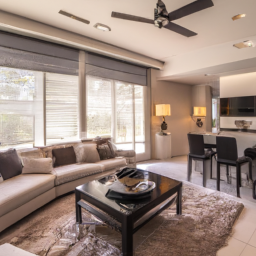Home automation has been around for years, but it wasn't until KNX came along that it became truly smart. KNX is a protocol that allows for the integration of various systems in the home, including lighting, heating, air conditioning, security, and more. With KNX, homeowners can control their homes from anywhere in the world, using their smartphones or tablets.
KNX is an intelligent system that enables communication between devices in the home. This means that devices can work together, rather than independently, to create a fully automated and integrated system. For example, the heating can be linked to the lighting, so that when the lights are turned off, the heating automatically adjusts to a lower temperature.
One of the key benefits of KNX is its flexibility. KNX can be used in new builds and retrofits, and it is compatible with a wide range of devices and systems. This means that homeowners can choose the devices and systems that suit their needs and preferences, and KNX will integrate them seamlessly.
Another benefit of KNX is its energy efficiency. KNX can help to reduce energy consumption by automatically adjusting the lighting, heating, and cooling systems based on the time of day, occupancy, and other factors. This not only saves money on energy bills, but it also reduces the home's carbon footprint.
KNX also offers a high level of security. With KNX, homeowners can monitor their homes remotely, using cameras and other sensors. They can also receive alerts if there is any unusual activity, such as a break-in or a fire. This gives homeowners peace of mind, knowing that their homes are protected even when they are away.
One of the most exciting features of KNX is its ability to learn. KNX can learn the habits and preferences of homeowners, and adjust the home's systems accordingly. For example, if homeowners typically turn the lights off at a certain time, KNX can learn this and automatically turn the lights off at that time in the future.
KNX is also easy to use. The system can be controlled using a simple app on a smartphone or tablet, or using a dedicated control panel in the home. This makes it easy for homeowners to adjust the settings and customize the system to their liking.
The cost of installing KNX varies depending on the size of the home and the systems that are being integrated. However, the long-term savings on energy bills and the added convenience and security make it a worthwhile investment for many homeowners.
In conclusion, KNX is a game-changer for smart home automation. Its flexibility, energy efficiency, security, and learning capabilities make it an ideal system for homeowners who want to create a fully automated and integrated home. Whether it's controlling the lighting, heating, or security systems, KNX offers endless possibilities for customization and convenience.
